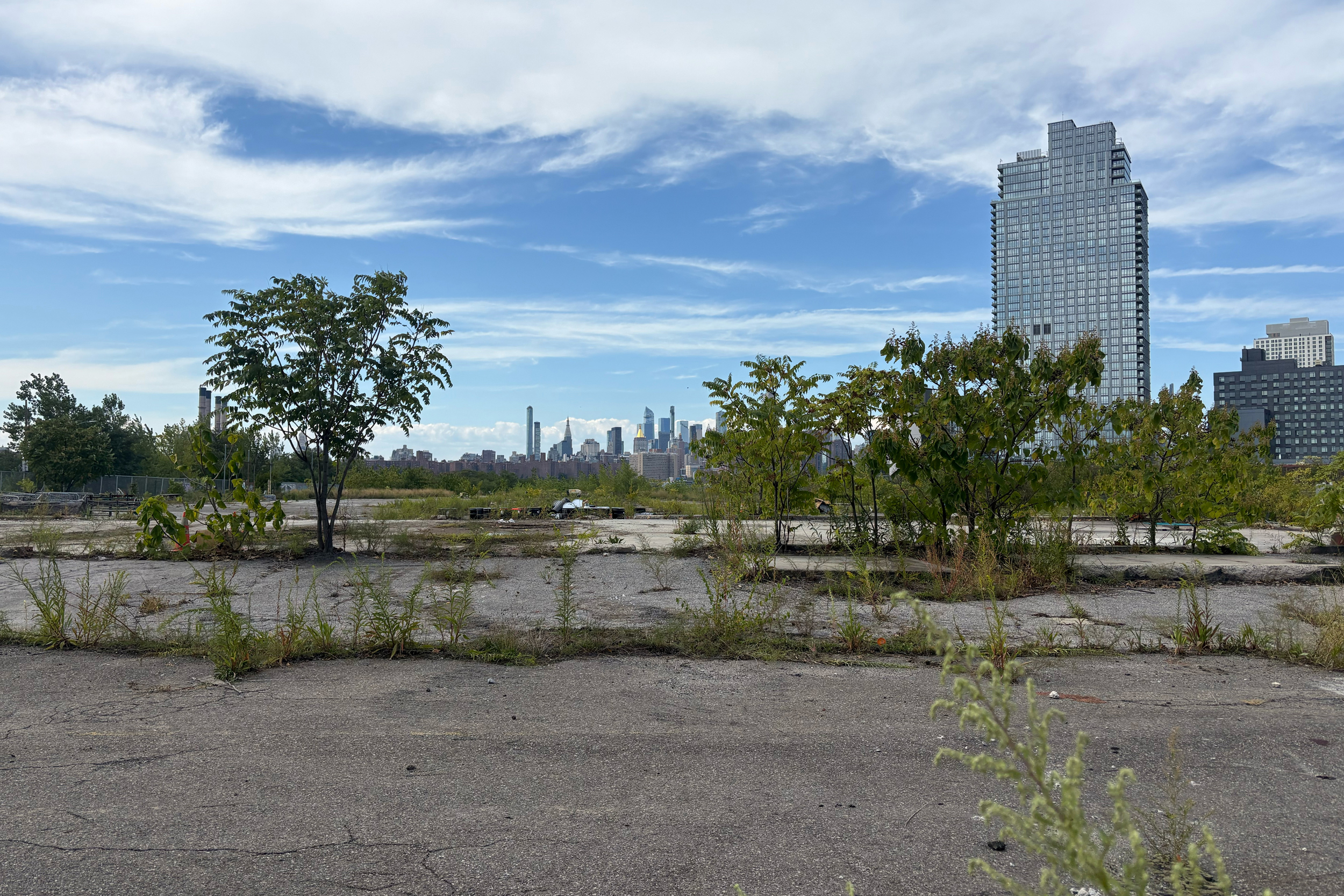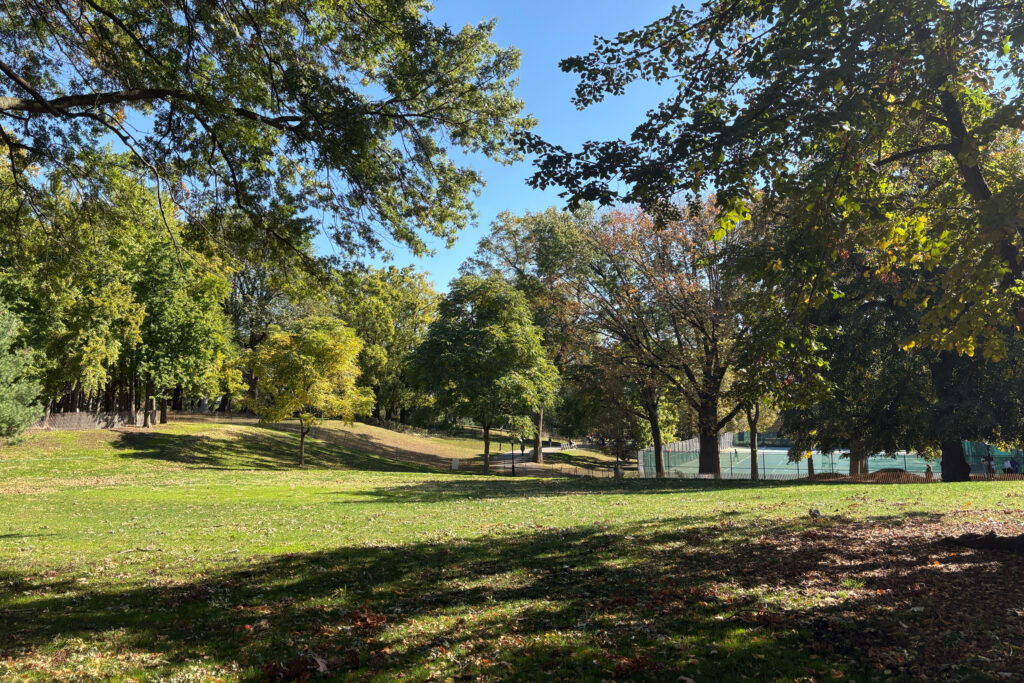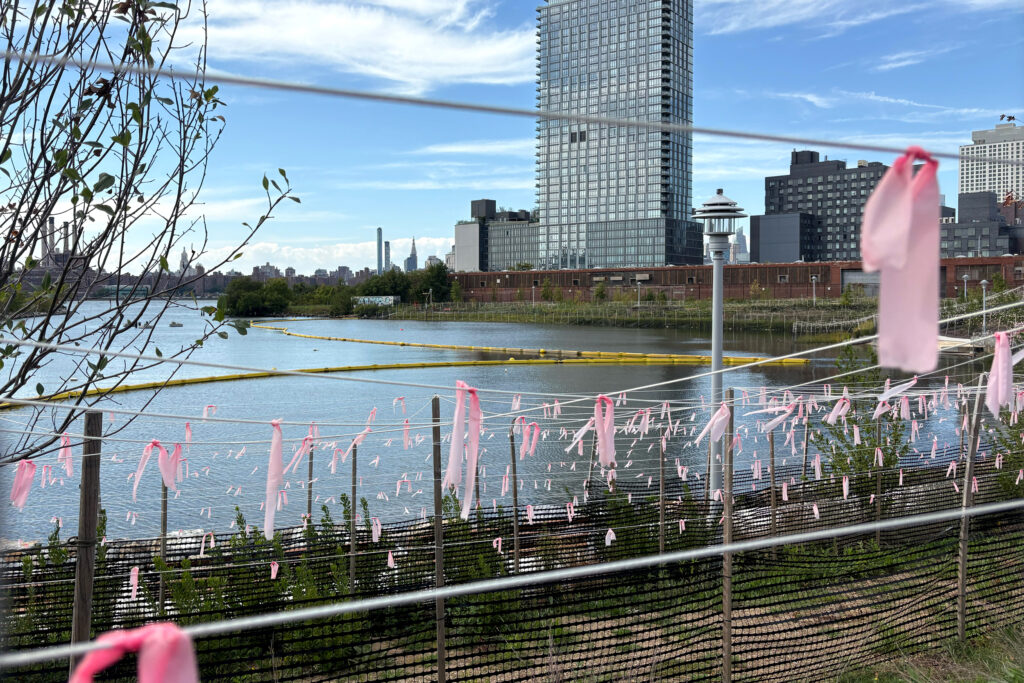The Elizabeth Street Garden, a cherished green space in lower Manhattan, was at the center of a heated debate that pitted locals against affordable housing advocates and city officials.
Residents in the neighborhood, known as Little Italy, and beyond were deeply attached to the garden and rallied to save it, fighting plans to build a 123-unit affordable housing development for senior citizens on the site. Their efforts led Mayor Eric Adams to abandon the project.
Across New York City, park advocates have influenced proposed developments to protect their local green spaces. But their advocacy has derailed affordable housing projects, like the one proposed for Little Italy.
The city faces a severe housing crisis, with a significant shortage of affordable options for its residents. Many city officials prioritize developing affordable housing to address the issue. But this kind of housing is often built into luxury high-rises, and that can mean adding thousands of new residents to a neighborhood.
The influx of people can put more strain on the already limited spaces for parks, a key tool for reducing heat stress in the summer and for absorbing stormwater during heavy rain to prevent flooding.
Parks have other benefits. A report in 2015 found that Central Park provides opportunities for community and exercise, leading to a reduction in health care and lost work hours valued in the tens of millions of dollars annually.
“New York City needs to be looking at its park system, really, as a quality of life tool,” said Adam Ganser, the executive director of the nonprofit research group New Yorkers for Parks. “Our parks and open spaces are one of the primary reasons people stay in the city.”
The success of residents opposing development projects often depends on their ability to sway the vote of their local city council member. A proposal on the November election ballot could change the rezoning process, necessary for many city developments. That could mean communities will lose a power of dissent that they’ve long relied on.
Residents will determine the future of member deference—the city council tradition of deferring to the local member for zoning decisions—through Ballot Proposal 4. This proposal could shift the balance of power, allowing the city government to establish a three-person panel, composed of the mayor, the borough president and the city council speaker, that will have the authority to overturn rejected zoning changes. Many on the city council, concerned about the potential loss of local control, unsuccessfully sought to prevent the proposal from reaching the ballot.
Community Engagement and Rezoning
Community engagement has become an increasingly important part of the rezoning and affordable housing development process.
In 2022, the New York City Council released new guidelines for land use and housing development. The new “toolkit” emphasizes that applicants seeking to change land-use zoning should “meet and substantively engage with local stakeholders early and often,” and continue to do so throughout the Uniform Land Use Review Procedure, also known as ULURP.
This was not an entirely new concept. Community boards, for example, have long enjoyed an advisory role in the rezoning process. However, the only binding votes are still that of the City Planning Commission, of the city council, and of the Mayor.
In recent months, the fate of a small piece of land that abuts the right side of Brooklyn’s Bushwick Inlet Park has drawn plenty of public interest.
According to a June presentation to the local community board, the proposed Monitor Point mixed used development by the Gotham Organization property firm will provide up to 1,150 new apartments, with 25 percent dedicated to affordable housing across two of the proposed buildings.
The land includes a Metropolitan Transportation Authority facility and a vacant lot that will house a museum commemorating the launch point of the USS Monitor, which was a Civil War-era naval ship.
The city’s mandatory inclusionary housing program requires developers to include affordable housing in their projects if they require rezoning—and this project does.
Gotham Organization wants to lease the land from the MTA and move the MTA facility located there to another area in the neighborhood. Then, the firm plans to build large mixed use housing developments on the newly vacated land. The organization also plans to build the monitor museum there and to pay an annual maintenance fee to help care for Bushwick Inlet Park.
But some long-time residents, including Katherine Conkling Thompson, say the plans are not enough. They worry that the luxury units could raise rents in the neighborhood and that the organization will not add enough new open space to an area that will attract thousands of new people. According to the NYU Furman Center for Real Estate and Urban Policy, the median gross rent in this neighborhood has increased from $1,240 in 2006 to $2,570 in 2023.
 Some parts of Bushwick Inlet Park are not yet open to the public. Credit: Lauren Dalban/Inside Climate News
Some parts of Bushwick Inlet Park are not yet open to the public. Credit: Lauren Dalban/Inside Climate News
Conkling Thompson has kept tabs on the construction of Bushwick Inlet Park, in the neighborhood of Greenpoint, since it began. Located on the waterfront in Brooklyn, the 27-acre parcel was rezoned for park use in 2005.
A resident since 1996 and now the president of Friends of Bushwick Inlet Park, Conkling Thompson talks excitedly about the newest portion of the park, which was slated to open in September, though it has been delayed a few weeks. From behind a chainlink fence, she can see newly planted grass trees and a waterfront path.
“I biked over here almost every day to check on the progress,” said Conkling Thompson.
But the Bushwick Inlet Park is still a work in progress after more than a decade. Due to higher-than-expected land costs, demolition delays and site contamination, only portions of the park are publicly accessible—and many areas are still covered in concrete.
“The ratio of people to open space is very poor,” said Emily Bauer, an urban planner who frequently visits the park and is a Friends of Bushwick Inlet Park board member.
According to the New Yorkers for Parks report on open space, around 84 percent of residents in the neighborhood live within a five-minute walk from a park. However, among the city’s 59 community districts, the Greenpoint-Williamsburg area ranks 48th in terms of parkland space.
Conkling Thompson advocates for considering alternative uses for the land where the Gotham Organization wants to build, such as incorporating it into the park or creating a resiliency buffer against rising seas and storm surges. A smaller building within the current zoning, she said, could also be 100 percent affordable.
Because the MTA, a state agency, owns the land, Conkling Thompson said it should be used for the public good. Most of the land has been zoned for a smaller residential development since 2005.
In response to questions from Inside Climate News, Bryan Kelly, president of development for Gotham Organization, wrote in an email that the firm would be supplying “deeply affordable housing,” one of the community board’s main priorities.
The project, as currently planned, would add a small park in another area of the neighborhood and grant public access to around 50,000 square feet of open and green space, according to the firm’s presentation to the community board.
“By replacing an aging industrial facility with all-electric buildings, restoring the shoreline with native plantings, and implementing flood-resilient infrastructure, Monitor Point represents a significant step forward in creating a more sustainable and climate-resilient Greenpoint waterfront for generations to come,” Kelly wrote in an email to Inside Climate News.
This story is funded by readers like you.
Our nonprofit newsroom provides award-winning climate coverage free of charge and advertising. We rely on donations from readers like you to keep going. Please donate now to support our work.
Ultimately, the City Planning Commission, the city council and the mayor will decide whether to rezone the land.
In the past, the city council has often refused to approve projects like this if a local council member opposes them through the tradition of “member deference.” In this case, local council member Lincoln Restler has not yet publicly commented on the project.
According to a city report, no housing proposal has been approved through the ULURP without the support of the local councilmember in the past 16 years.
Member deference, combined with the generally low turnout in city council elections, means that city council members can be beholden to a vocal few in the community, leading to changes and even complete slashing of new land-use proposals.
The city report found that, since 2022, around 3,547 planned apartments have been lost throughout the ULURP process due to withdrawn or modified applications, largely as a result of community concerns amplified by the local council member. Around 925 of those homes would have been at least income-restricted.
New Developments, Old Parks
Ganser, of New Yorkers for Parks, wants to see more formal incentives for developers to contribute funds to build new local parks or maintain existing ones. The only way concessions can be obtained currently is through the ULURP, which only happens when rezoning is required.
Brooklyn’s Fort Greene neighborhood has seen waves of gentrification over the past 25 years. Between 2006 and 2023, rents in the neighborhood increased by 116 percent, according to the NYU Furman Center for Real Estate and Urban Policy.
The main green space in the neighborhood is the hilly Fort Greene Park. On a warm September morning, Rosamond Fletcher, executive director of the Fort Greene Park Conservancy, and Kai Lawrence, an environmental programs manager there, strolled through the park.
 A view of Brooklyn’s Fort Greene Park. Credit: Lauren Dalban/Inside Climate News
A view of Brooklyn’s Fort Greene Park. Credit: Lauren Dalban/Inside Climate News
Neither lives in the area. Fletcher was forced out by rising rent prices, she said, and moved to Staten Island a few years ago. According to Fletcher, the past few years have seen an increase in the park’s maintenance needs, primarily due to funding cuts.
“With all of the city’s budget cuts,” Fletcher said, “we have to play a role in filling the gap.”
Currently, Fletcher said, the conservancy funds three positions at the city’s parks department to care for the park. There are also groups of volunteers who help care for it, and the Green Team, who are mostly young local paid volunteers, Fletcher said.
Recently, a developer proposed expanding a seven-story office building to 72 stories to add more than 1,000 new apartments—some of which would be affordable—a block or so away from Fort Greene Park. The project, led by the Rabina and Park Tower Group in partnership with the city’s Department of Housing Preservation and Development, needs approval through the ULURP for rezoning.
The park conservancy has publicly advocated for changes to the project, citing concerns that the project will significantly increase the number of residents in the neighborhood without a corresponding increase in green space.
Walking through the park and pointing to areas where the soil has been eroded due to overuse, Fletcher clarified that the conservancy did not oppose the project outright, but that the developers need to “help sustain the health of our parks.”
The park has no irrigation system, so all watering is done manually. Most of the elms in the park also need to be inoculated against Dutch elm disease, Fletcher said.
“We want people to use the park… but we have limited resources,” said Fletcher. “The real estate community needs to think about the value of Fort Greene for their residents.”
To accommodate an influx of regular visitors, the Fort Greene Park Conservancy has requested an annual maintenance payment of around $300,000 from the developers. The developers, Rabina and Park Tower Group, did not respond to questions from Inside Climate News.
On Sept. 17, the community board recommended approval of the project, with conditions. One of these was “a meaningful financial contribution to the Fort Greene Park Conservancy for ongoing maintenance and operations.”
About This Story
Perhaps you noticed: This story, like all the news we publish, is free to read. That’s because Inside Climate News is a 501c3 nonprofit organization. We do not charge a subscription fee, lock our news behind a paywall, or clutter our website with ads. We make our news on climate and the environment freely available to you and anyone who wants it.
That’s not all. We also share our news for free with scores of other media organizations around the country. Many of them can’t afford to do environmental journalism of their own. We’ve built bureaus from coast to coast to report local stories, collaborate with local newsrooms and co-publish articles so that this vital work is shared as widely as possible.
Two of us launched ICN in 2007. Six years later we earned a Pulitzer Prize for National Reporting, and now we run the oldest and largest dedicated climate newsroom in the nation. We tell the story in all its complexity. We hold polluters accountable. We expose environmental injustice. We debunk misinformation. We scrutinize solutions and inspire action.
Donations from readers like you fund every aspect of what we do. If you don’t already, will you support our ongoing work, our reporting on the biggest crisis facing our planet, and help us reach even more readers in more places?
Please take a moment to make a tax-deductible donation. Every one of them makes a difference.
Thank you,

Reporter, New York City
Lauren Dalban is a New York City-based reporter with a background in local journalism. A former ICN fellow, she now covers environmental issues in all five boroughs. Originally from London, she earned a B.A. in History and English from the University of Virginia, and an M.S. from Columbia Graduate School of Journalism.

